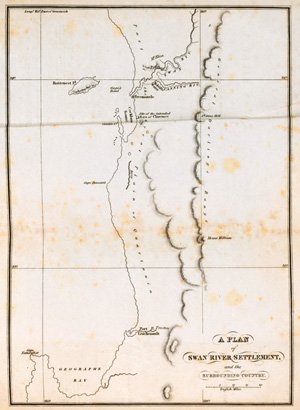On this day: Perth was founded

THE WESTERN AUSTRALIAN COAST had witnessed the passing of Dutch and French explorers since the 1600s, but when the first British settlers arrived in June 1827, they meant to assert their control over the area, suspecting the French might be interested in settling in.
In the end, the British claimed the area and settled Australia’s now fourth biggest city, Perth, Western Australia.
Lieutenant-Governor James Stirling, Captain of the British ship Parmelia, was appointed by his government to organise the settlement of a colony around the mouth of the Swan River. He was seduced by the natural environment and chose the river to locate the main town around, given its abundance of fresh water and building material, along with protection from the surrounding Hills and the benefits of the nearby wetlands.
Stirling officially declared the foundation of Perth, capital of the colony, on 12 August 1829, the date chosen to honour the birthday of the King George IV. The name of Perth was chosen after the birthplace of Sir George Murray, the British Secretary of State for the Colonies.

An early plan of Perth. (Credit: Wikimedia)
Settlers move in to Perth
Settlers came from their camp on Garden Island, together with civil officials and soldiers from the 63rd Regiment to attend the ceremony held near the site of the actual Town Hall. Mrs Helen Dance, wife of the Sulphur’s captain, second boat of the expedition, gave the first stroke of an axe into a tree, felled to signify the building of a new town. Perth was born.
The British government tried to encourage families to immigrate to the Swan River Colony by offering them ownership over large plots of land. But the local conditions made settlement very difficult: isolation meant constant supply shortages; the sandy soils were unsuitable for agriculture; and the sheep and cattle were decimated by disease.
Cohabiting with the Noongar people in Perth
Coexistence with the Noongar Aboriginal people didn’t go as planned either.
“The structure of the Aboriginal society is such that food and belongings are shared and not owned by any one individual” says Jan McCahon Marshall, history librarian at the City of Perth Library. “The settlers became hostile towards the Aboriginals because their food and belongings were being taken but they seemed unaware of the culture of the Aboriginal people.”
These cultural differences were so vast that sometimes turned into battles.
“It was difficult for the European authorities to talk and negotiate with the Aboriginal people because they didn’t have a hierarchical society that the European was used to”, explains Jan.
The settlers eventually asserted their domination and the Aboriginal people were scattered around the region in designated areas.
Convicts and minors made the Perth into a city
The introduction of convicts in 1850 made up for the decline in immigration and provided cheap labour for the construction of the city of Perth.
Gold mining in the 1890s and the mineral boom of the 1960s and 1970s brought more settlers and the resources to shape the modern city of Perth.
RELATED STORIES




